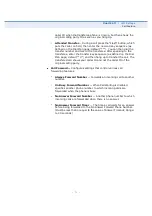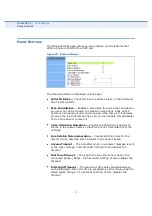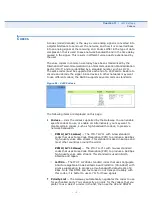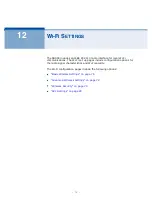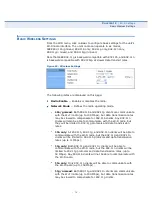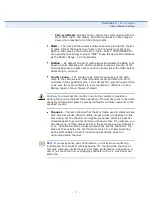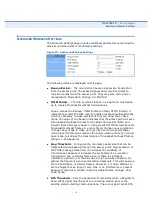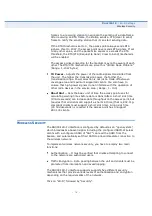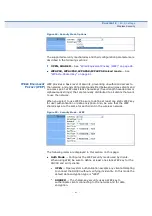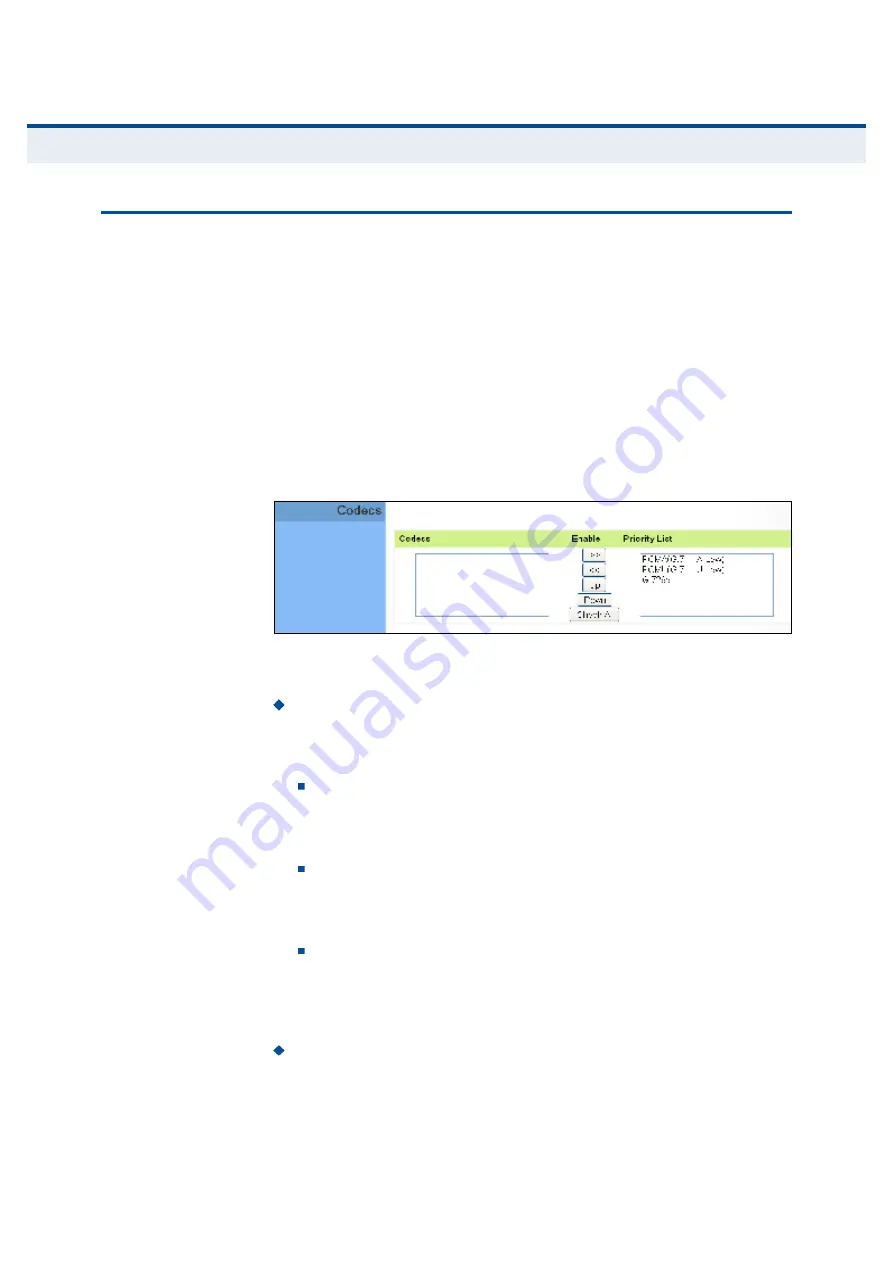
Ý
ØßÐÌÛÎ
ïï
| VoIP Settings
Codecs
73
Ý
ÑÜÛÝÍ
A codec (coder/decoder) is the way a voice analog signal is converted into
a digital bitstream to send over the network, and how it is converted back
into an analog signal at the receiving end. Codecs differ in the type of data
compression that is used to save network bandwidth and in the time delay
caused in the signal. This results in different voice quality experienced by
the user.
The voice codecs in common use today have been standardized by the
International Telecommunication Union Telecommunication Standardization
Sector (ITU-T) and are identified by a standard number, such as G.711.
The same codec must be supported at each end of a VoIP call to be able to
encode and decode the signal. Since devices in other networks may want
to use different codecs, the RG300 supports several common standards.
Figure 51: VoIP Codecs
The following items are displayed on this page:
Codecs
Lists the codecs supported by the Gateway. You can enable
specific codecs to use, or enable all. Alternatively, you may want to
disable certain codecs, such as high-bandwidth codecs, to preserve
network bandwidth.
PCMA (G.711 ALaw)
The ITU-T G.711 with A-law standard
codec that uses Pulse Code Modulation (PCM) to produce a 64 Kbps
high-quality voice data stream. This standard is used in Europe and
most other countries around the world.
PCMU (G.711 ULaw)
The ITU-T G.711 with mu-law standard
codec that uses Pulse Code Modulation (PCM) to produce a 64 Kbps
high-quality voice data stream. This standard is used in North
America and Japan.
G.729a
The ITU-T G.729ab standard codec that uses Conjugate
Structure Algebraic-Code Excited Linear Prediction (CS-ACELP) with
silence suppression to produce a low-bandwidth data stream of 8
Kbps. Note that DTMF and fax tones do not transport reliably with
this codec, it is better to use G.711 for these signals.
Priority List
The Gateway automatically negotiates the codec to use
for each called party. You can specify a priority for the codecs that you
prefer to use. Select a codec in the list, then use the UP and DOWN













